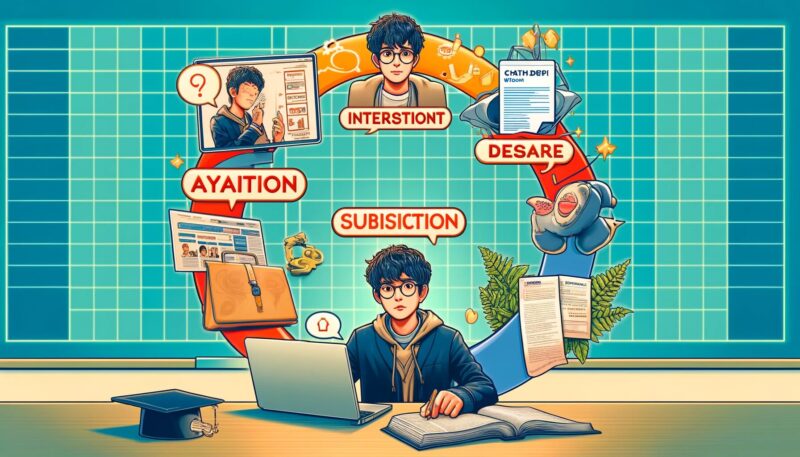Do you have questions or concerns like these?
- What is AIDA model?
- What is a concrete example of AIDA model?
If you’re grappling with such questions and uncertainties, this time I will clearly explain:
- Overview
- A concrete example based on my experience
Please refer to this article to deepen your understanding of AIDA model.
What is AIDA model?

AIDA model in marketing is a theoretical framework used to describe the stages of consumer purchasing behavior.
This model consists of four stages: Attention, Interest, Desire, and Action, each describing how consumers engage with a product or service.
1. Attention
The first stage is capturing the consumer’s attention.
This is achieved through advertising and promotional activities.
Since consumers encounter a lot of information in their daily lives, it is crucial to attract attention with standout advertisements and unique approaches.
2. Interest
Next, marketers need to generate interest in the product or service.
This is accomplished by highlighting the features and benefits of the product.
Consumers only take an interest if they perceive the product as valuable, making tailored messaging to the target audience essential.
3. Desire
Once interest is piqued, the next stage is to foster a desire for the product or service.
This involves appealing to consumers’ emotions and emphasizing the unique advantages of the product.
The goal is to make consumers feel a strong desire to own the product.
4. Action
The final stage is getting consumers to take action and purchase the product or service.
This is facilitated by simplifying the purchasing process and providing incentives for immediate action.
What is a concrete example of AIDA model?

Attention
As a graduate student majoring in marketing, I constantly seek new tools and technologies to aid my research and assignments.
One day, while searching for marketing-related content online, I came across an advertisement for OpenAI’s ChatGPT.
The ad highlighted how ChatGPT could be beneficial for business and academic research, capturing my attention.
Interest
Intrigued by the ad, I wanted to learn more about ChatGPT.
I clicked the link and visited the official website, where I read about its features and use cases.
I was particularly interested in how ChatGPT could assist with data analysis and developing marketing strategies.
Additionally, I found case studies of other students and researchers using ChatGPT, which further piqued my interest.
Desire
As I delved deeper into the site, my desire to try the tool grew stronger.
I could envision how ChatGPT might significantly enhance my research.
I was especially eager to explore new methods to solve marketing challenges in my field of study, and ChatGPT seemed to offer the solution I was looking for.
Action
Finally, I decided to try ChatGPT for myself.
I created an account on the official website and signed up for the free trial.
I then input questions related to my research topics and reviewed ChatGPT’s responses.
Impressed with its capabilities, I realized ChatGPT could greatly benefit my research, prompting me to subscribe officially.
This article uses material from the Wikipedia article “AIDA (marketing)” which is released under the Creative Commons Attribution-Share-Alike License 4.0. Additionally, the texts and images were generated using ChatGPT.


